Today we are going to look at one of NVIDIA’s mid-range graphics card featuring the company’s first generation Maxwell graphics processor that offers lower power consumption and decent performance at an affordable price. I have here the Gigabyte GeForce GTX 750 Ti OC (GV-N75TOC-2GI) featuring the company’s WindForce 2X GPU cooler, Ultra Durable 2 components and supports 4K resolution at 60Hz. The GV-N75TOC-2GI comes with a factory overclock settings, a base clock speed of 1033MH, boost clock of 1111MHz and 2GB GDDR5 memory. Are you planning to build a budget friendly gaming rig powered by a GeForce GTX 750 Ti? Please continue reading my Gigabyte GeForce GTX 750 Ti OC review below and find out if this is the graphics card that should be on your list.
Gigabyte GeForce GTX 750 TI OC Review
Gigabyte has released four different graphics based on the GeForce GTX 750 Ti Maxwell GPU. They have the GL edition, the WindForce OC edition, the Black Edition, and the GV-N75TOC-2GI overclock edition. For this review we are just going to focus on the GV-N75TOC-2GI.
The Gigabyte GeForce GTX 750 Ti OC features a base clock speed of 1033MHz and a Boost clock speed of 1111MHz. It’s a tad higher compared to the reference speed which is 1020MHz and 1085MHz respectively. It is built with 2GB GDDR5 memory running on a 128-bit memory interface.
It supports PCI Express 3.0 x16 bus interface, Dual-link DVI-I and DVI-D ports, and 2x HDMI ports. It also requires that you have at least a 400w power supply, and unlike other GeForce GTX 750 Ti (including the reference one) Gigabyte’s GTX 750 Ti requires you to connect the graphics card with a 6-pin PCIE power connector.
Even though this is just a mid-range budget friendly graphics card, it can support 4K display at 60Hz speeds via two HDMI ports for desktop and multimedia use. But when it comes to gaming with 4K display, don’t expect to get decent frame rates (even playable frame rates) with a GTX 750 Ti. The GV-N75TOC-2GI also features the company’s renowned WindForce 2X GPU cooler providing a much better cooling performance compared to the reference one.
Aside from that, Gigabyte is also known for their robust and stable components. The Gigabyte GTX 750 Ti OC features Ultra Durable 2 components such as Ferrite Core Chokes, Low RDS (on) MOSFET and Lower ESR Solid Capacitors, and sophisticated layout topology. I’ll discuss more of the graphic card’s features as we take a closer look below. You can also check out its detailed specifications on the table below.
Gigabyte GeForce GTX 750 Ti OC Specifications
| Model | GV-N75TOC-2GI |
| Chipset | GeForce GTX 750Ti |
| Memory Clock | 1350MHz - 5400 MHz (effective) |
| Process Technology | 28 nm |
| Memory Size | 2048MB |
| Memory Bus | 128 bit |
| Core Clock | Base:1033MHz Boost:1111MHz (Standard- Base:1020MHz Boost:1085MHz) |
| Card Bus | PCI-E 3.0 |
| Memory Type | GDDR5 |
| DirectX | version 11.2 |
| OpenGL | version 4.4 |
| PCB Form | ATX |
| Digital max resolution | 4096 X 2160(via 2 HDMI) |
| Analog max resolution | 2048 x 1536 |
| Multi-view | 4 display |
| I/O | Dual-link DVI-I*1/DVI-D*1/HDMI*2 |
| Card size | L=204mm , W=144 mm, H=42mm |
| Power requirement | 400W |
A Closer Look at the Gigabyte GV-N75TOC-2GI
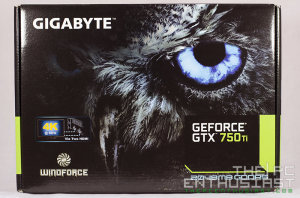
The Gigabyte GeForce GTX 750 Ti OC comes in a simple and straight forward box. However, I’m wondering why Gigabyte is using an “Owl” (if I am not mistaken) on their box, since one of their competitors also has an “owl” branding. Anyway, the main features of the graphics card can be read on the back side of the box. The package includes a small quick guide pamphlet, a driver CD, a 6-pin PCIE power adapter and the graphics card itself.
Above is the front and back view of the Gigabyte GTX 750 TI OC. It measures 204mm in length, 144mm in width and it’s just 42mm thick occupying two PCI slots. The shroud is made of plastic and the holographic sticker on the fans looks cool. Notice that the heatsink and the rear fan extends a little bit, not really a big deal in my opinion.
Above are different angles of the graphics card. I’m sure you already noticed that the card’s PCB is color Blue, since it’s very obvious. I wonder why Gigabyte opted to use Blue instead of the more popular Black PCB. Most of its competitors are using black PCB and many would prefer a black PCB. Only their GTX 750 Ti Black Edition features a black PCB. I hope Gigabyte would use a black PCB in their future graphics cards regardless of the model or edition.
Unlike most of the GeForce GTX 750 Ti graphics card out there, the Gigabyte’s GTX 750 Ti has a 6pin power connector, and that is not an optional power input. The card will require you to connect an external power via a 6-pin PCIE power connector.
You might be wondering why Gigabyte opted to draw power from a PCIE instead from the motherboard itself. NVIDIA built the GTX 750 Ti and GTX 750 to be so power efficient that it can function properly by drawing power from the motherboard alone. But there are non-reference GTX 750 Ti, not only Gigabyte’s, which draws its power directly from a 6-pin PCIE power. I asked Gigabyte why, and they told me that they will never know what motherboard their customers will be using. According to them, the quality and the power that a motherboard can provide to the graphics card differs from one brand and model to another. So to be safe, it’s best to draw power directly from the power supply to ensure stable and sufficient power.
In my opinion, while it’s good to play safe, I think it’s still best that it did not come with a 6 pin power connector since that is one of the main feature of a GTX 750 Ti (to be power efficient). People might think that it’s more power hungry compared to other GTX 750 Ti out there, since it requires an external power. Anyway, if a user messed up his graphics card because he installed it on a low end motherboard, or (worst) a crappy low quality motherboard, I think that is no longer Gigabyte’s fault if the graphics card got damage.
On the output ports of the Gigabyte GV-N75TOC-2GI it has two DVI ports, and two HDMI ports. You can connect up to 4 displays using this graphics card, and it also supports 4K display monitor at 60Hz via two HDMI ports. Yes, you have to connect the two HDMI ports to your 4K display to take advantage of the 60Hz speed.
Although it supports 4K display at 60Hz, this does not mean that you will get decent frame rates when gaming on a 4K monitor. The GeForce GTX 750 Ti is built for 1080p gaming and not 4K. You will need a more powerful graphics card, like the GTX 780 Ti, to enjoy 4K gaming.
Above are photos of the Gigabyte WindForce 2X cooler. It has two fans with semitransparent fan blades, and the heatsink features 1 copper heatpipe that transports the heat from the GPU to the aluminum fins. The cooler may look big for the GPU, but I think the size is just right considering that it does the job of cooling the graphics card very well.
On this angle, you will notice that the fan blades are slightly tilted. That’s not a camera trick, those fans are really tilted. That’s actually one feature of the WindFore 2X cooler. It pushes the heat from the heatsink towards the rear end of the graphics card. But I think the fans should be tilted on the opposite direction so that it will push the heat towards the exhaust and outside the system.
Above are photos of the front and rear view of the Gigabyte GeForce GTX 750 Ti OC PCB. There’s nothing special or fancy about this card and it’s pretty much straight forward. According to Gigabyte they are using a sophisticated layout topology that delivers the ideal integration of thermal, electric characteristics, digital signals, power circuitry and optimum placement of components for enhanced graphics performance.
The Gigabyte NV75TOC-2GI uses four Samsung K4641325FC-HC03 memory chips for a total of 2GB GDDR5 running on a 128-bit memory interface, and they are rated to run at 5400MHz effective clock speed. The other picture shows a closer look at the 28nm GM107-400-A2 Maxwell silicon, that is the heart of the GTX 750 Ti graphics card. The GM107 features 640 CUDA cores, 40 TMUs and 16 ROPs. The reference GTX 750 Ti has a base clock of 1020MHz and 1085MHz Boost clock speed.
Test Setup
In testing the Gigabyte GTX 750 Ti OC, I’m using a new Z97 motherboard, the Gigabyte Z97X Gaming G1 WiFi Black Edition, powered by an Intel Core i7-4770K. Also during the test, I am using NVIDIA 9.18.13.4052 (ForceWare 340.52) driver version for Windows 7 64bit. Below are the rest of the specifications of the test system.
Operating System: Windows 7 Ultimate 64bit
Motherboard: Gigabyte Z97X Gaming G1 WiFi Black Edition
Processor: Intel Core i7-4770K
CPU Cooler: Corsair Hydro H105
Memory: 16GB Avexir Blitz 1.1 DDR3 1600MHz
Graphics card: Gigabyte GeForce GTX 750 Ti OC (GV-NV75TOC-2GI)
Hard Drive: Kingston HyperX 3K 120GB for the OS and WD RE 4TB for game files
Power Supply: Seasonic X750 Gold Series v3
Overclocking the Gigabyte GeForce GTX 750 TI OC
Overclocking the Gigabyte GTX 750 Ti OC further was easy. I used Gigabyte’s OC Guru II and I tried to push its GPU clock speed to 1240MHz, boost clock speed to 1318MHz and memory clock speed to 1425MHz (5700MHz effective). That’s 20% increase in terms of core clock speed, and 18.63% increase in boost clock.
I’m sure the base, boost and memory clock can still be pushed further, but I’m just not a fan of overclocking your graphics card too much. Better get the next faster graphics card than pushing your card to its limit. Not only will overclocking result in more heat and power consumption, but it may decrease the life of the GPU as well.
Gigabyte GTX 750 Ti OC Temperature and Fan Noise
I was impressed with the silent PWM fans on the Gigabyte GTX 750 Ti OC. Although the GTX 750 Ti doesn’t produce much heat due to its low TDP, the WindForce 2X cooler design does a great job in cooling the graphics card. On idle I’m getting around 25 degrees Celsius only. The temperature goes up to 35 degrees to 45 degrees Celsius when in full load (stock speeds). And when overclocked, with the clocked speeds I mentioned above, the highest temperature I got at full load is just 63 degrees Celsius, around 55 degrees on the average. The fans are pretty silent as well. It’s barely noticeable on idle to medium load, and at full load the fans are still running whisper quiet.
Gigabyte GTX 750 Ti OC Benchmark Results
Below are the benchmark results I got while testing the Gigabyte GV-NV75TOC-2GI. The first graph is the Gigabyte GTX 750 Ti OC running with an Intel Core i7-4770K processor.
The second graph below is the Gigabyte GTX 750 Ti OC running with an Intel Pentium G3258 Anniversary Edition processor. I don’t think that the processor is already a bottleneck, but paring it up with a much faster quad core processor will give you an overall better performance.
“3DMark 11 is a DirectX 11 video card benchmark test for Windows. 3DMark 11 makes extensive use of DirectX 11 features including tessellation, compute shaders and multi-threading. It includes the Deep Sea and High Temple Graphics tests, a Physics test and a Combined test.”
“3DMark Fire Strike is a showcase DirectX 11 benchmark designed for today’s high-performance gaming PCs. It is our most ambitious and technical benchmark ever, featuring real-time graphics rendered with detail and complexity far beyond what is found in other benchmarks and games today.”
“3DMark Sky Diver is a DirectX 11 benchmark for gaming laptops and mid-range PCs. Use 3DMark Sky Diver to benchmark systems with mainstream graphics cards, mobile GPUs, or integrated graphics. It is especially suitable for DirectX 11 systems that cannot achieve more than single-digit frame rates in the more demanding Fire Strike test.”
You can download FutureMark’s 3DMark and 3DMark 11 Benchmark tools at http://www.futuremark.com
Below are actual game benchmarks of the GV-NV75TOC-2GI. All games are set to their highest settings, with V-Sync turned off and monitor resolution is at 1920×1080. The minimum, average and maximum frames per second were extracted using Fraps. Meanwhile I used the built-in or in-game benchmarking tool for the Tomb Raider and Metro Last Light.
Below are the benchmark results from CompuBench. The left side is the result using the stock settings, while the right side is the result I got after overclocking the graphics card.
Price and Availability

The GV-N75TOC-2GI is actually the cheaper model compared to the Black Edition. If you want to save money, better get this one instead and just overclock it to match the performance of the other SKUs.
Gigabyte GeForce GTX 750 TI OC Review: Conclusion
After several weeks of testing and using the Gigabyte GeForce GTX 750 Ti, I find no flaws or hiccups on this card. The graphics card is working as expected, and since Gigabyte has set a pretty conservative factory overlock settings, the clock speeds can still be pushed further.
In terms of temperature and cooling performance, the WindForce 2X cooler gets the job done perfectly. It might be a little bit overkill for the GTX 750 Ti, but you can rest assure that the Gigabyte GTX 750 Ti is running cool and quiet even at overclocked settings.
I don’t really mind the additional 6-pin power connector. It’s no biggie for me, but I think it would be better if it didn’t require an external power source, or at least make it optional. However, that blue PCB does hurt in terms of aesthetics. Some or many may not find a graphics card with a blue PCB pleasing to the eyes. Oh, I think the Gigabyte OC Guru II needs improvement as well in terms of user interface.
Overall, the Gigabyte GeForce GTX 750 Ti OC (GV-N75TOC-2GI) is a great solid graphics card. It’s very cool and quite, can still be overclock further and pricing is competitive as well. I would have given it with an Editor’s Choice award if not for the blue PCB, and probably the required 6 pin power connector. But this card still deserves an award, and that’s The PC Enthusiast’s Highly Recommended award.

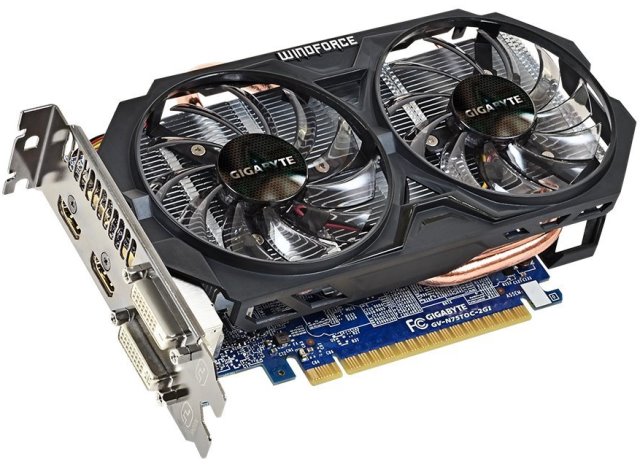
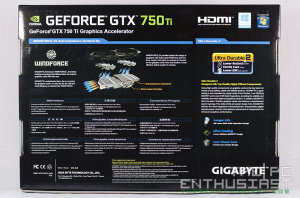
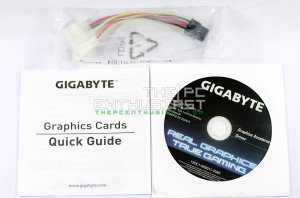
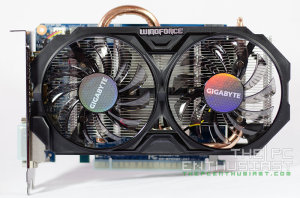
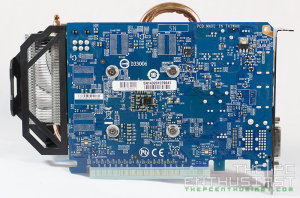
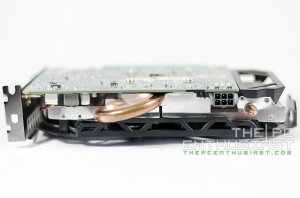
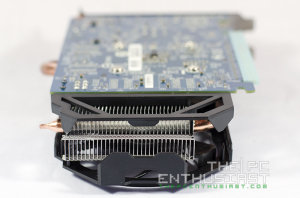
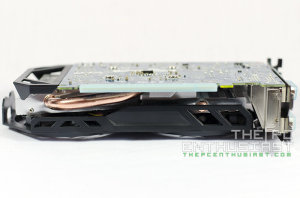
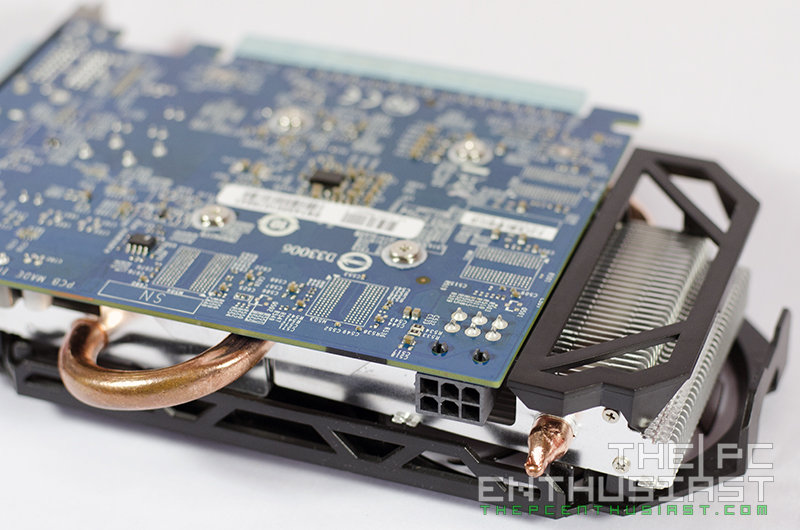
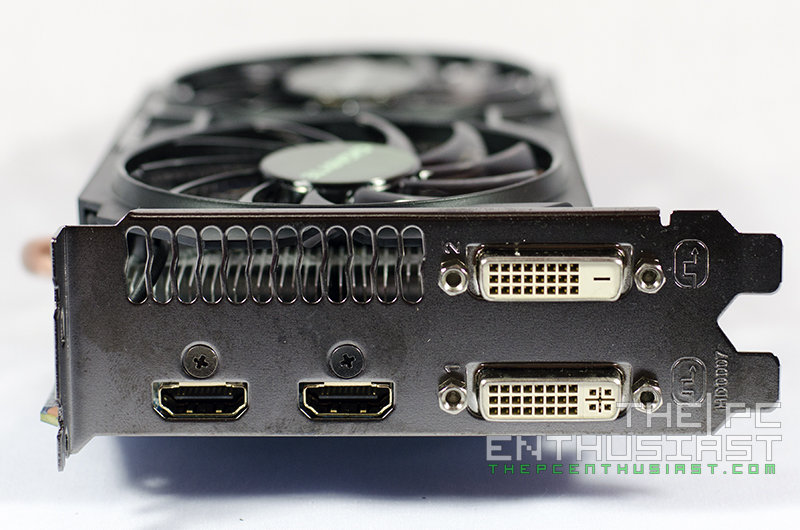
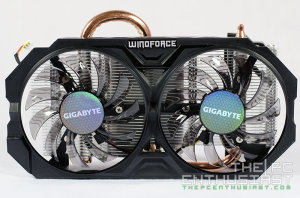
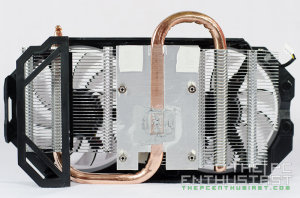
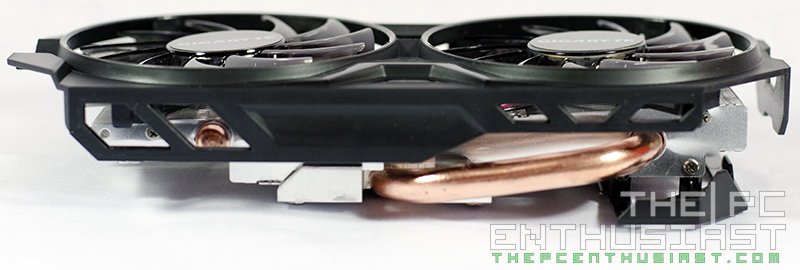
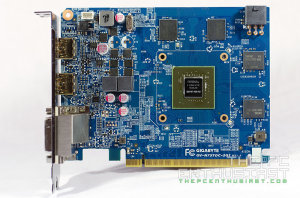
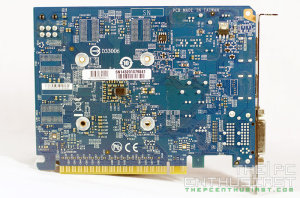
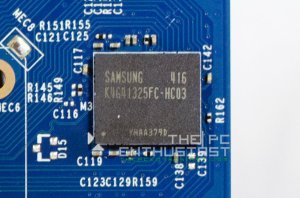
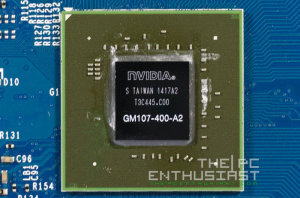
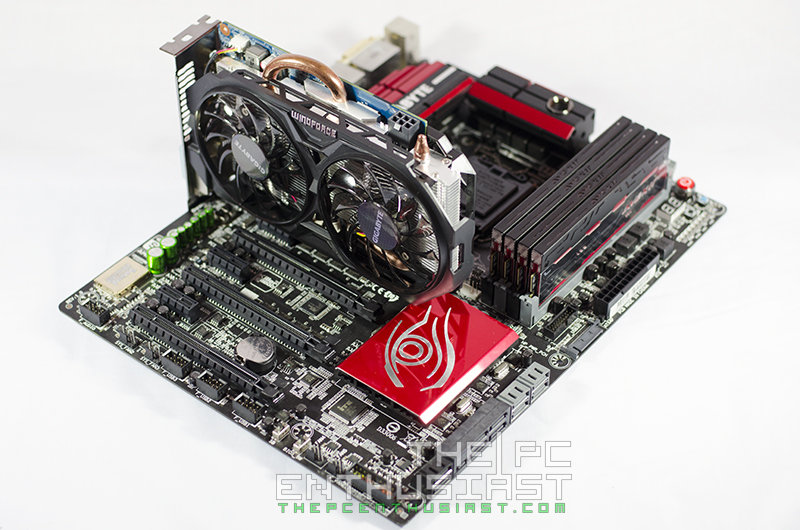
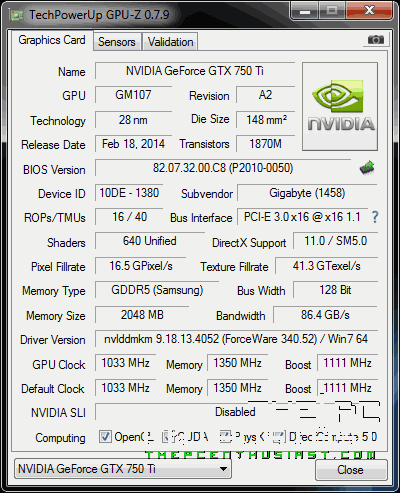
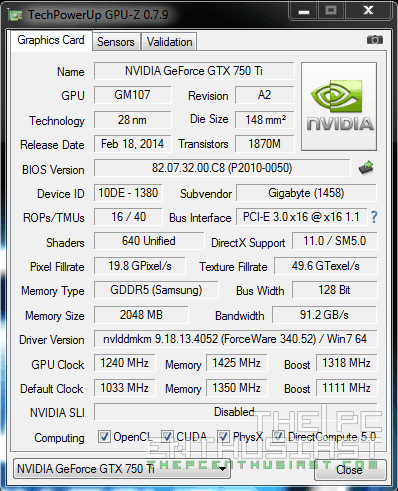
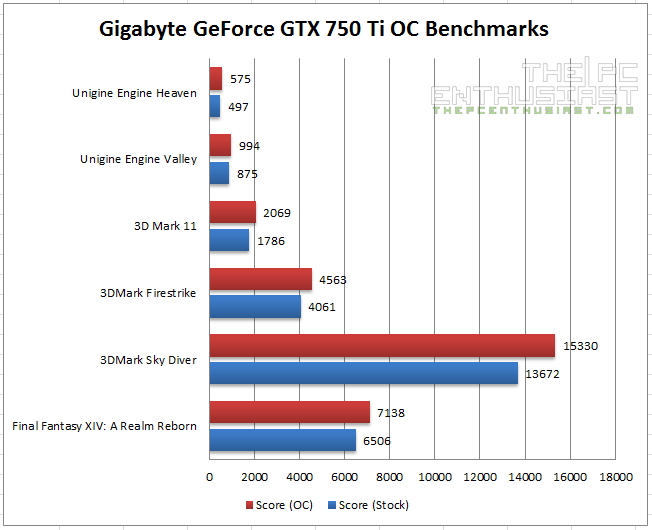
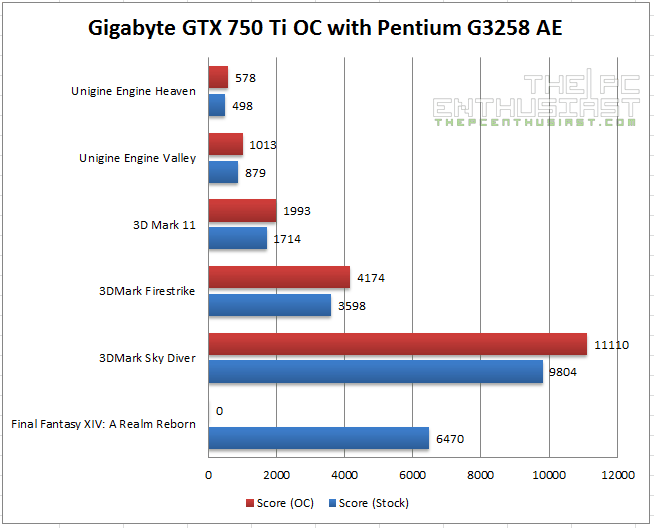
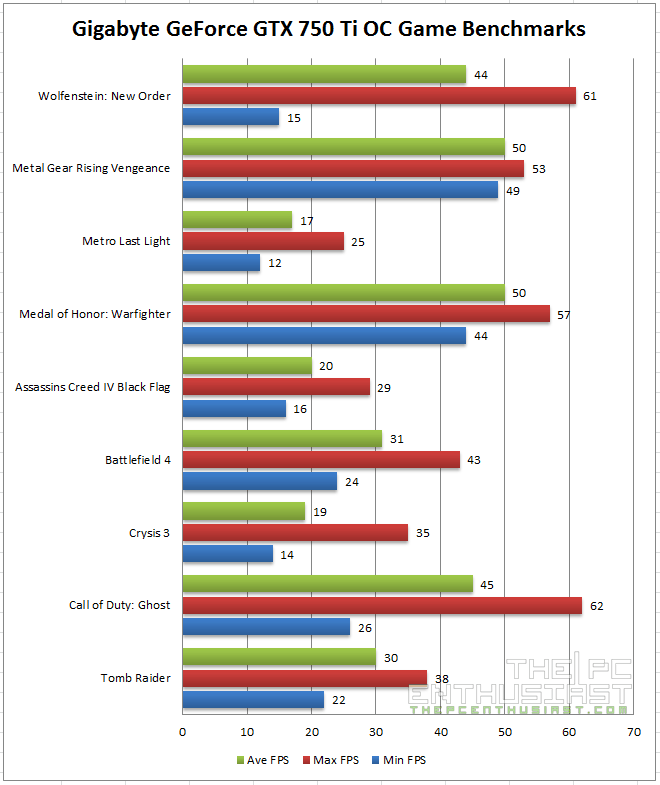
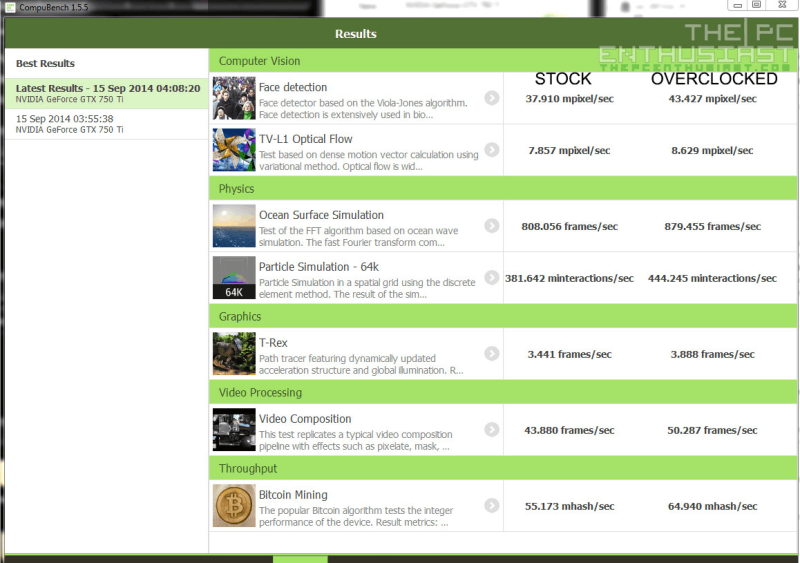

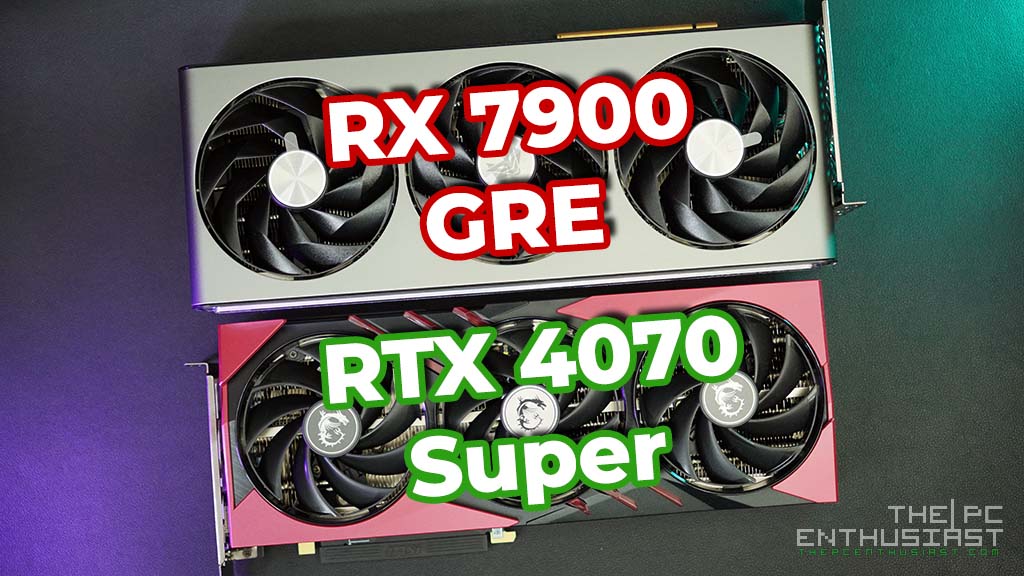
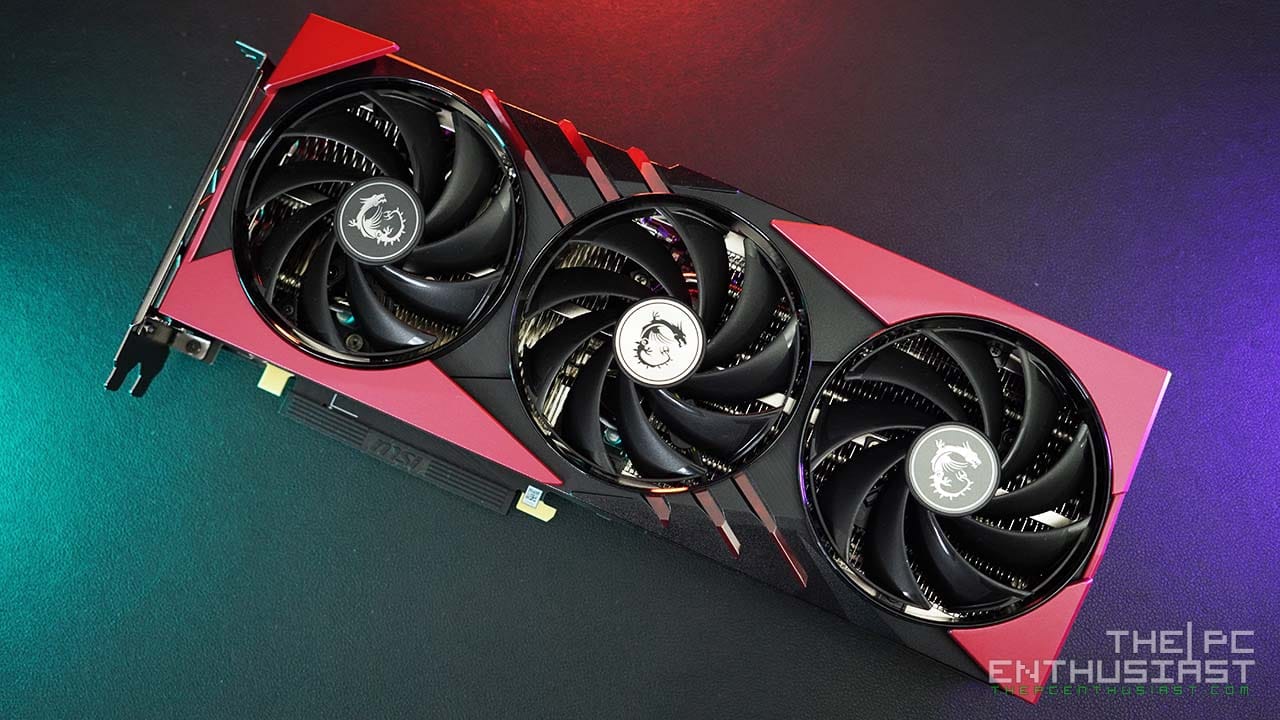
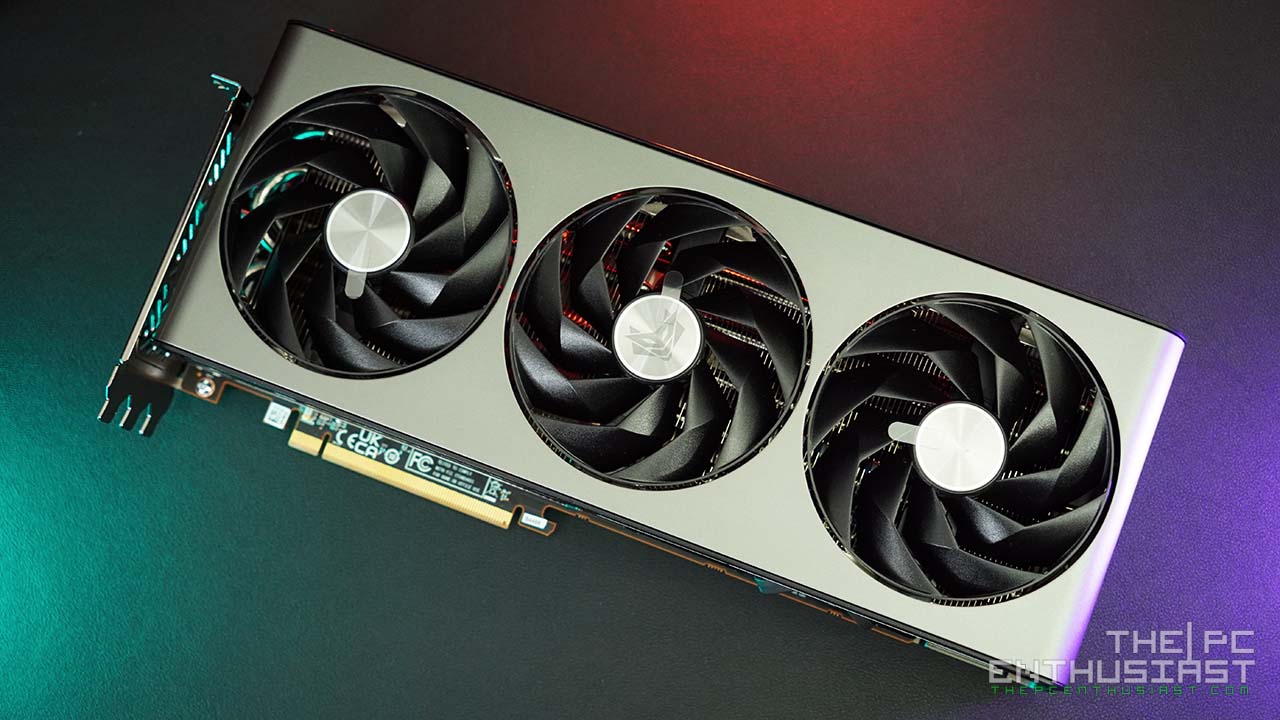
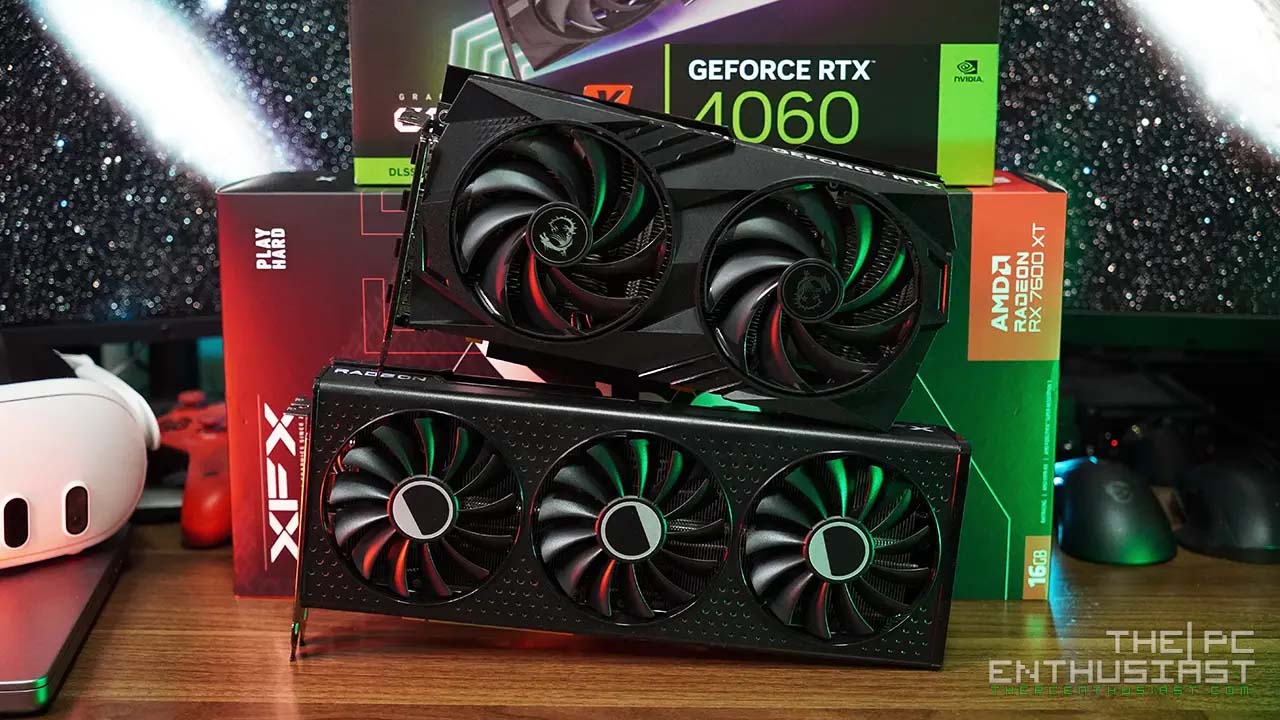
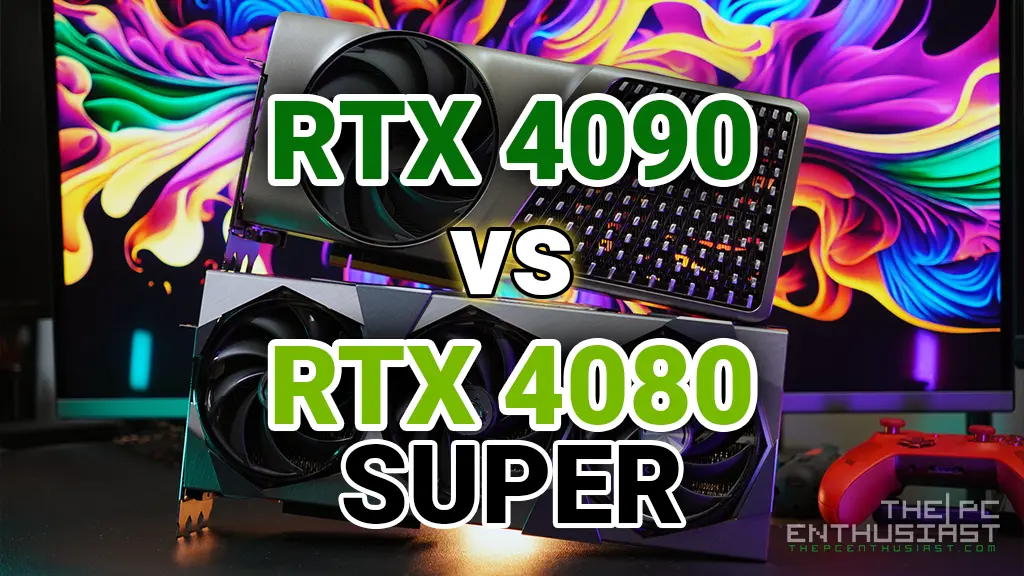
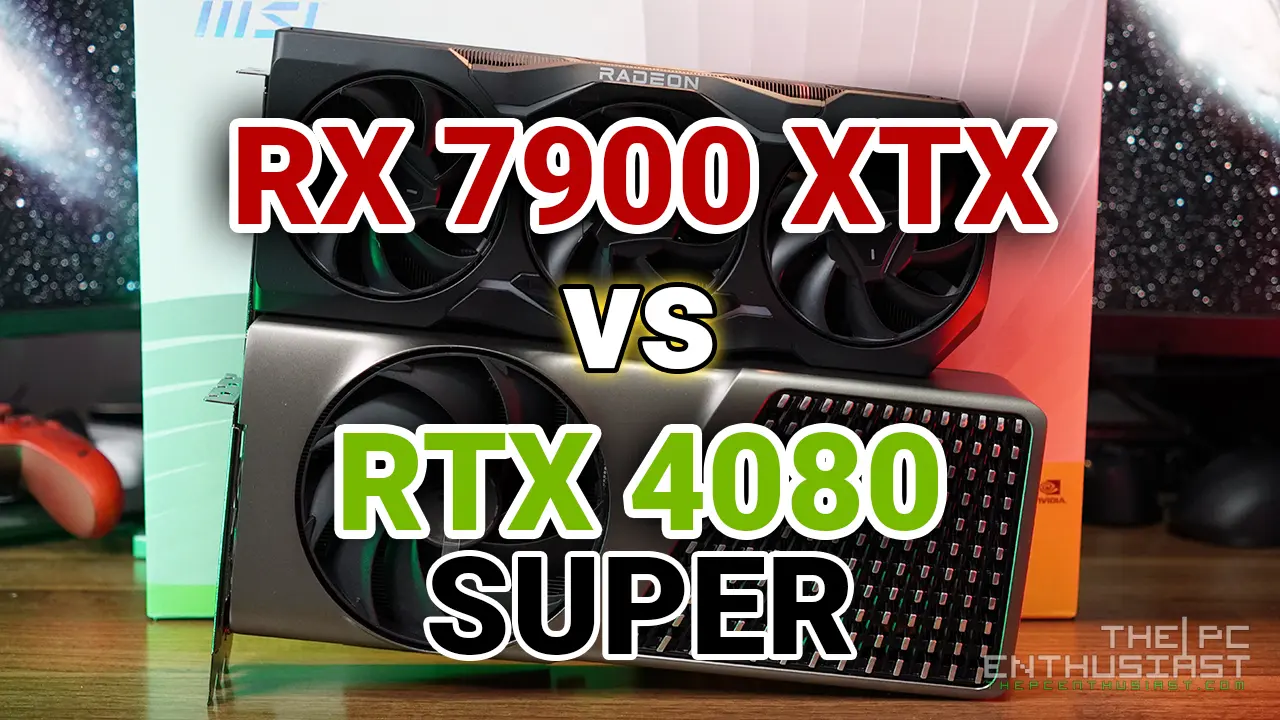

GRAPHICS CARD
Gigabyte GeForce GTX 750 Ti OC Review (GV-N75TOC-2GI) – Featuring WindForce Cooler
I want to oder with you the above mentioned system